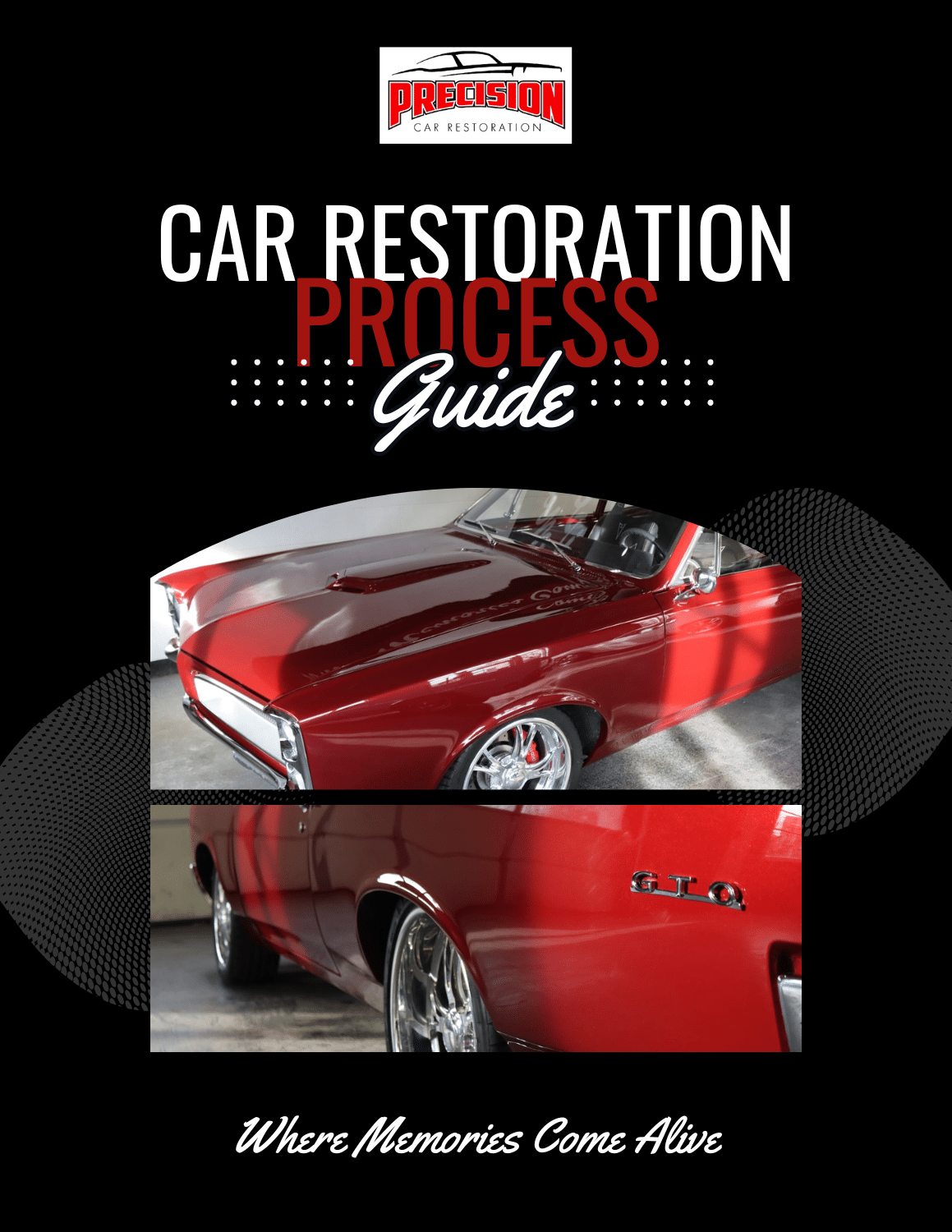A high quality paint jobs is nothing without the tedious task of sanding and buffing the clear coat. A highly skilled painter can make a paint job look good without sanding and buffing, but those extra steps are what can take good to great. Sanding and buffing is vital to any high quality paint job and these some of the steps we take to meet and exceed our standards.
It all starts with the paint job. Minimal dirt, no runs, and an even texture make sanding the clear coat that much easier. You must start with a clean surface. The number one thing that will cause problems with buffing is dirt in your sand paper. The foreign dirt and debris can get caught between the paper and clear coat and will cause a scratch that will not buff out. Blowing off the surface with compressed air and cleaning with a damp towel will remove the chance for contamination.
Different people have different ways of sanding and buffing a car. People have differing opinions on what grit paper to use, how many steps to take, and to dry sand or wet sand. We use a combination of different grit papers and wet and dry sanding to obtain the level we are looking for.
The first stage starts with 1000 grit paper. The paper made by 3M is often referred to as a film. This film is attached to a finishing dual action sander (called a D/A). It is important at this stage to not sand too much. As finishing sand papers go, 1000 grit is pretty course, so off of sharp body lines and edges is essential to keep from sanding through the clear coat. The 3M film is designed to use dry, so using compressed air will help the surface clean. Blowing off the paint surface and sand paper is important to saying free of dirt build up.

The D/A is used to “knock down” the dirt nibs in the paint, and even out the texture on the larger surfaces. Replacing paper often is important to keep the cutting surface fresh and consistent. Sanding needs to take place in steps working from 1000 and moving to a finer grit like 1500 and then on to 2000 grit. Use these finer grit papers in the same manner as the first and with each step sanding closer and closer to the edges. The finer grit papers help smooth the scratches from the courser grits which will in turn make buffing easier.
The proper use of the D/A is also very important. Using the correct interface pads, proper air pressure, and keeping the moisture out of the system will help keep the dust from collecting and balling up on the paper. The sander should always stay moving and off of sharp lines and edges. Paper should be free of rips and tears. Anything other that paper to paint has the potential to create an un buffable scratch.
Before buffing, a final sand using a 3000 grit paper that is attached to a foam back up pad is used. The 3000 grit paper can be used wet. It’s best to used water from a squirt bottle. The water helps keep the surface lubricated and clean. The 3000 grit pad has very little cutting ability. It acts as almost a pre-buff, leveling out the sanded surfaces from the courser grit papers. After sanded all surfaces should be cleaned and wiped down with a soft wet cloth then dried. This will help make sure all dirt nibs have been sanded smooth and all surfaces have been sanded evenly.

Buffing also involves lots of practice and skill, but starting slow will help you get a feel for the tool and the paint. Using a variable speed 8” buffer with a wool pad start slow and spread the compound over a smaller area. Keep the compound from slinging across the room. Not only does it make a mess, but will stain walls and paint if left unclean.
Buffing creates heat. This heat can burn the paint if you’re not careful. Using too little compound won’t bring the paint to a shine and run the risk of burning the paint. Too much compound can etch into the paint and create a build up that can be hard to buff off. A good rule can be about a 4” bead of compound to one square foot of buffing surface. The biggest thing to know is to keep moving. Staying in place will only cause the paint to heat up and burn.
After you have made it through with the heavy cut compound and a wool pad, there can be a series of steps that can be taken to remove swirl marks and the finer scratches left from the wool pad. A once over with a foam pad and compound, then a softer foam pad and polish, followed by a hand polish will make your fresh paint shine like no other. When finished, clean all compound out of the jambs, clean up any sludge from sanding, and make sure all excess compound is cleaned from any cracks and crevasses.
Sanding and buffing is a skill that takes time to learn. It’s not for the faint of heart. When done correctly it will take a mediocre paint job to the next level with a little bit of time and elbow grease.




